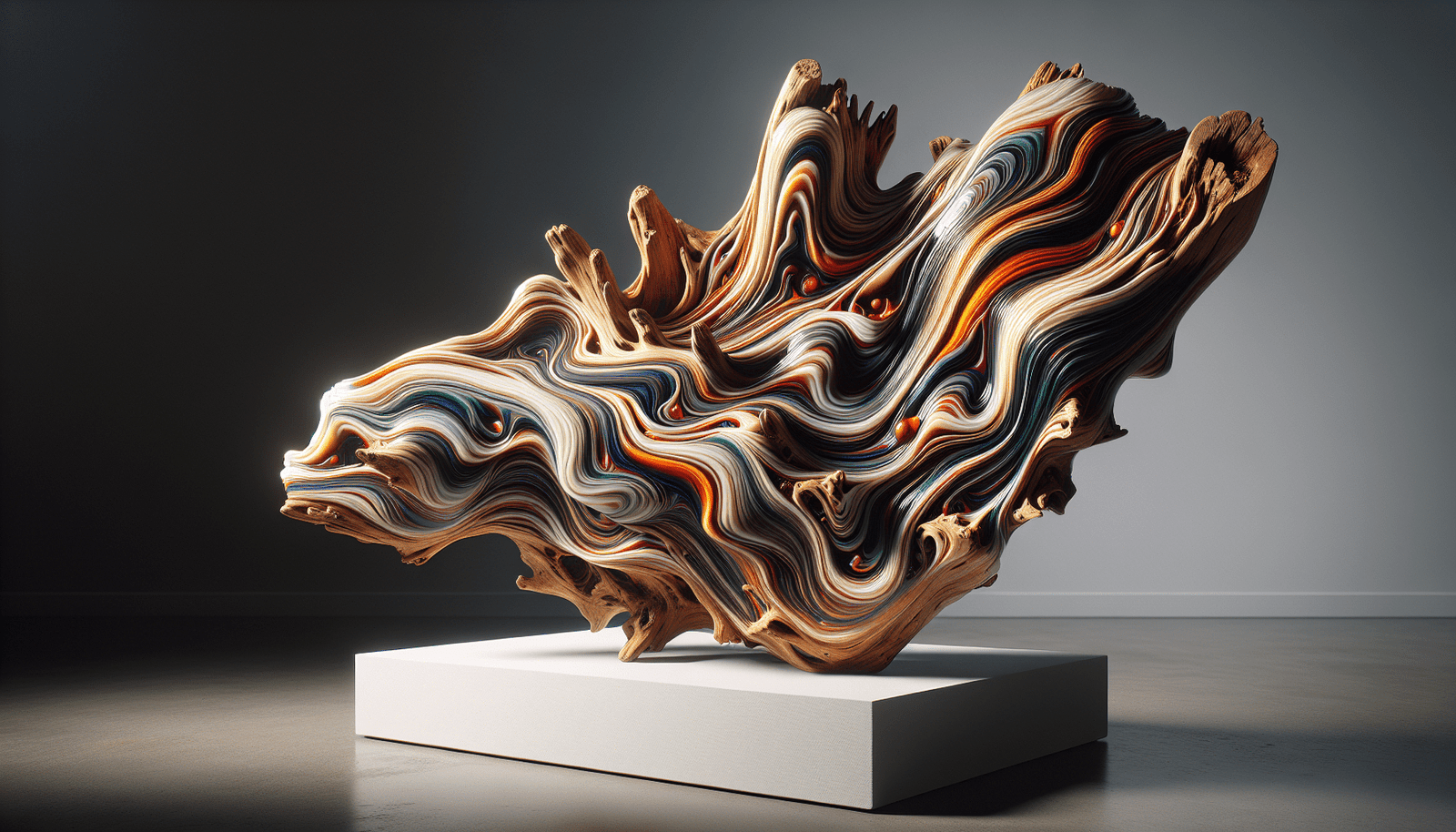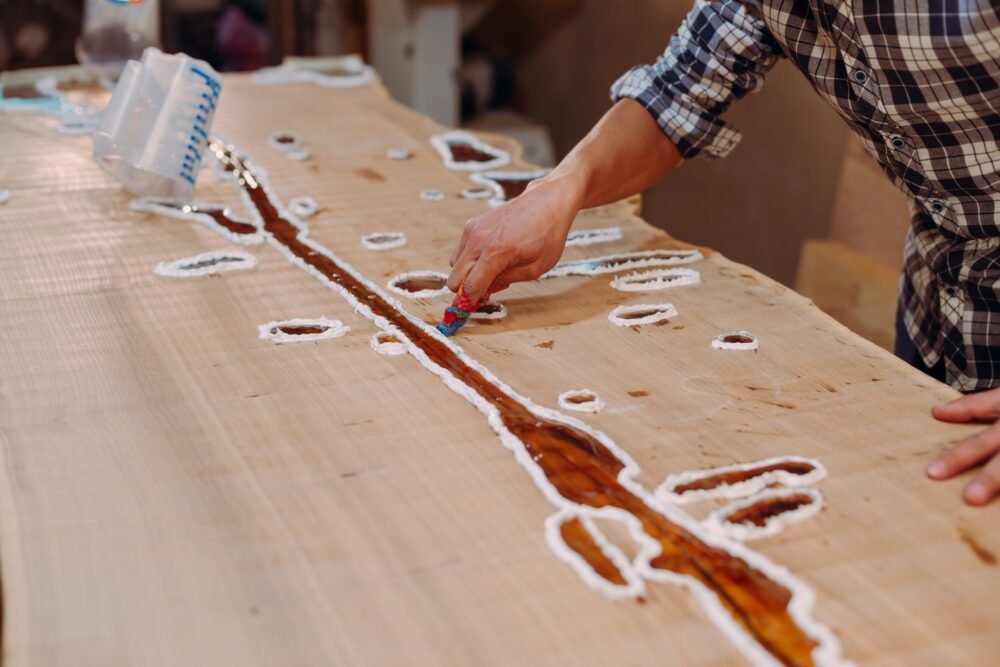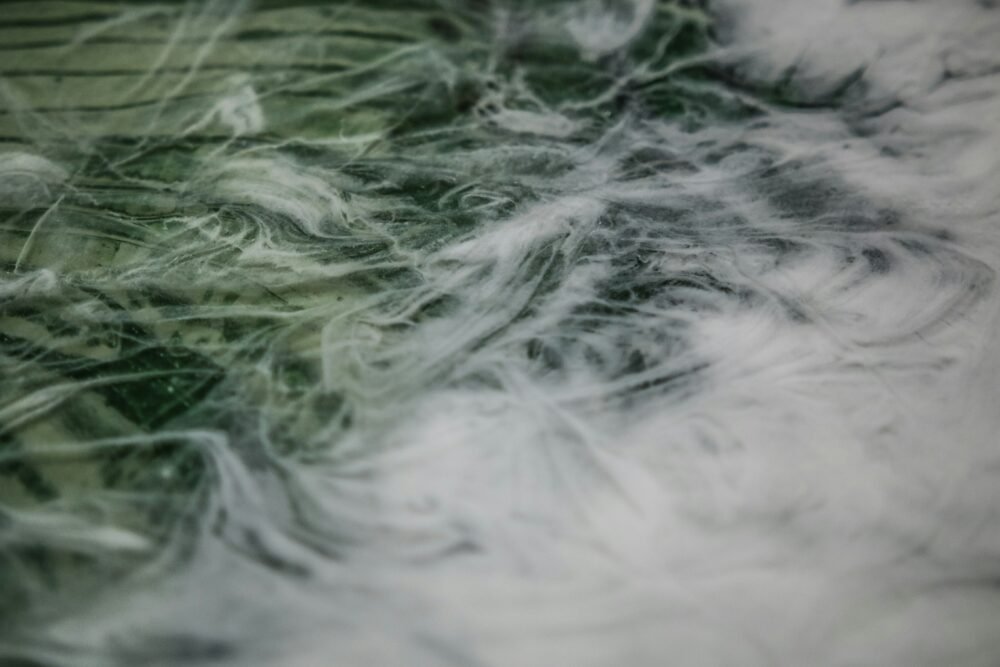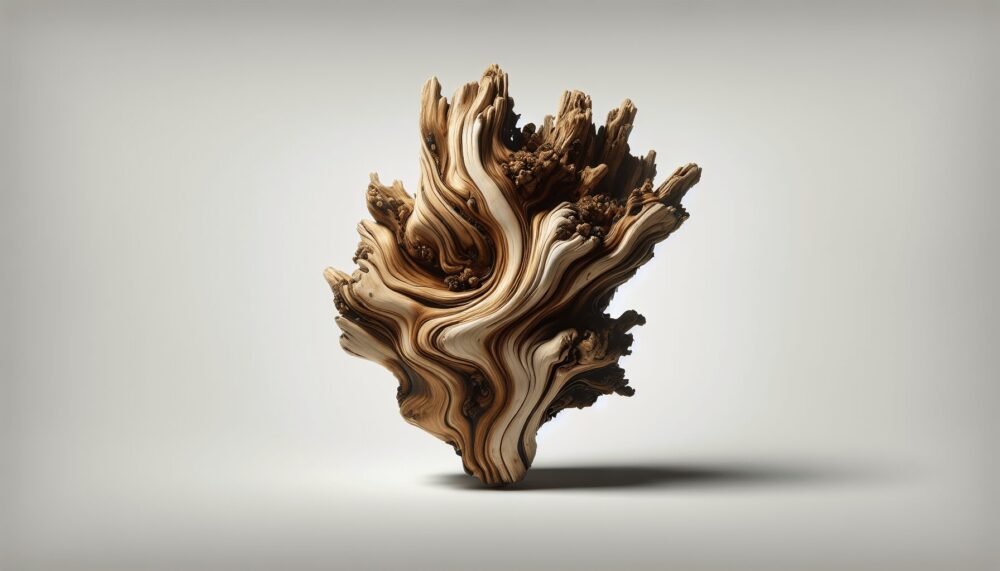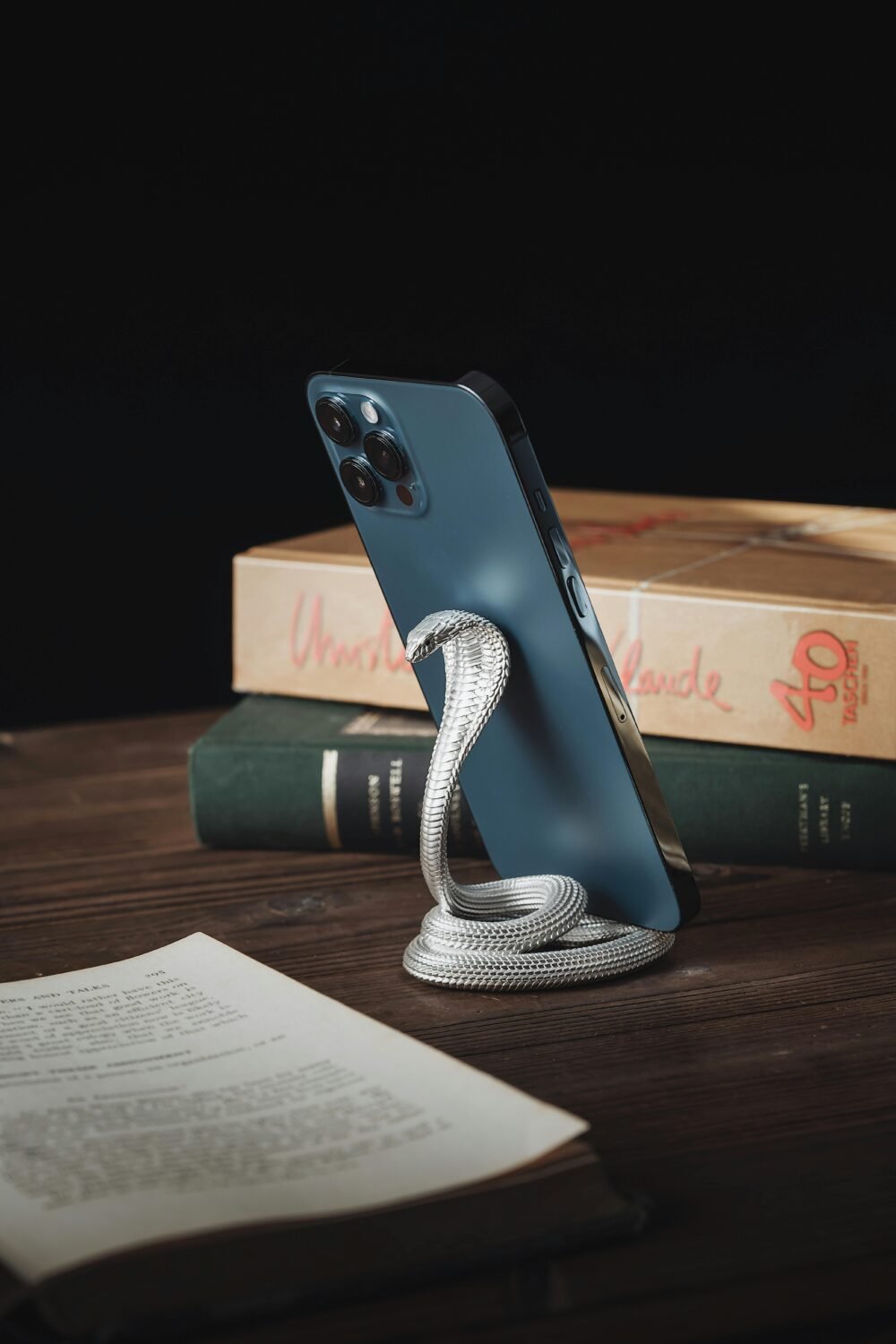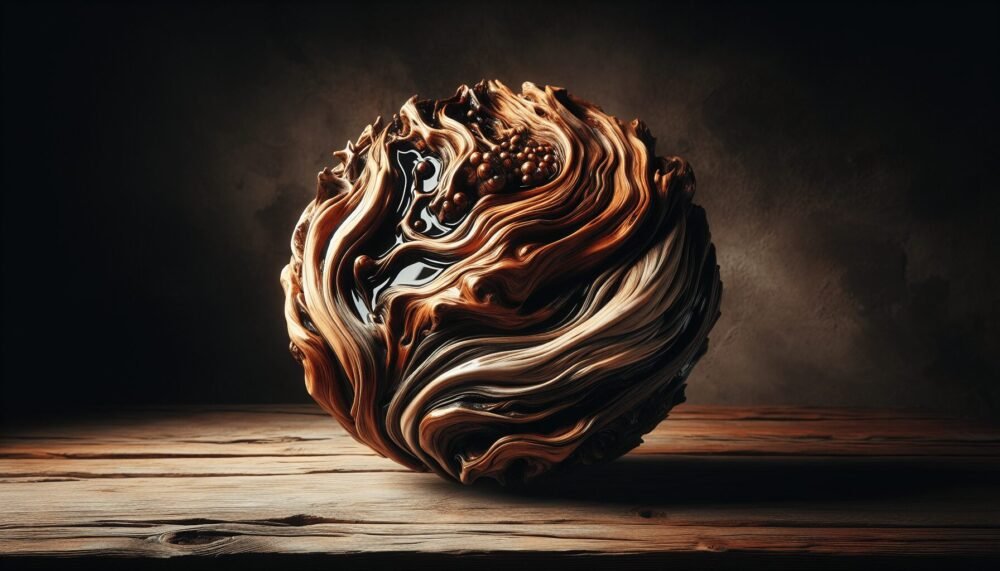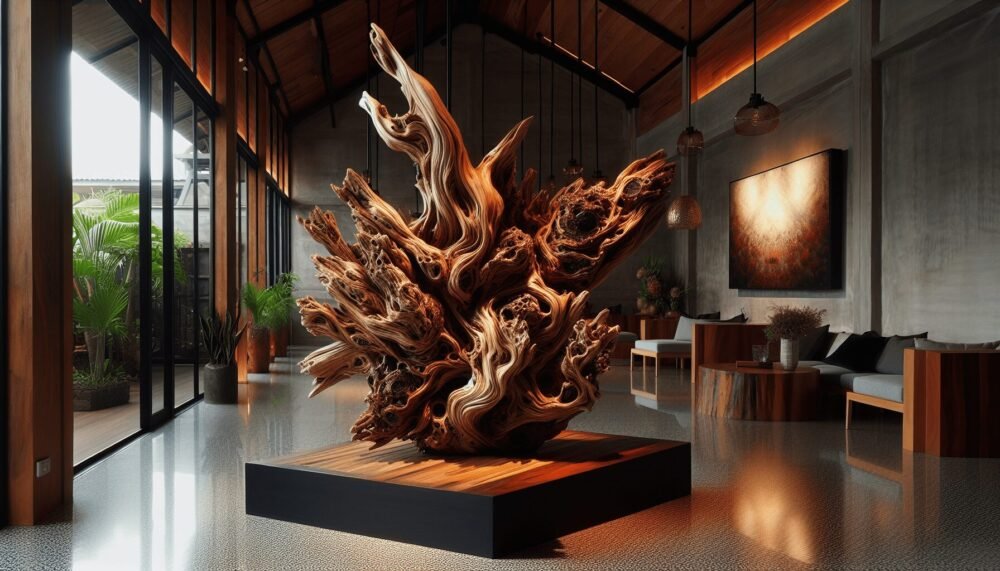Have you ever found yourself captivated by the beauty of driftwood washed ashore, weathered by the elements and full of character, only to wonder how to incorporate such natural elegance into your home? Driftwood and epoxy work together seamlessly, crafting stunning pieces that blend the raw allure of natural materials with the glossy perfection of synthetics. This fusion not only showcases artistic flair but also respects and honors the natural beauty of the wood itself.

Understanding Driftwood
Driftwood, nature’s artwork, is a wood piece that’s been shaped and smoothed by natural forces such as water and weather. Originating from fallen trees or branches, it can travel for miles, tumbling and turning until it washes ashore, cast by the waves. Each piece is unique, bearing the marks of its journey.
Characteristics of Driftwood
When you first consider driftwood, its unique characteristics immediately stand out. Each piece is shaped by its own journey through rivers and seas, making it a canvas rich with history and texture. The colors range from soft grays to warm, earthy browns, often bleached by the sun and stained by minerals from the water.
Collecting Driftwood
If you enjoy beachcombing, collecting driftwood can be a rewarding experience. However, it’s important to respect the environment and local regulations, as some areas prohibit the removal of driftwood to preserve natural habitats. When you find driftwood you can collect, ensure it’s solid and not crumbly, as sturdier pieces are better suited for crafting.
Introducing Epoxy
Epoxy resin is a versatile material used widely in the art and crafting community for its ability to create a clear, hard surface. This synthetic compound is applied in liquid form and then hardens, making it perfect for a myriad of applications, from table coatings to intricate art pieces.
Why Use Epoxy with Driftwood?
The marriage of epoxy with driftwood enhances the natural beauty of the wood, filling crevices and cracks while preserving its organic form. Epoxy adds durability and a polished look that complements the rustic appeal of driftwood, providing both function and form. When cured, epoxy is incredibly strong and water-resistant, making it ideal for household items like tables, sculptures, and countertops.

Crafting with Driftwood and Epoxy
Blending driftwood and epoxy is not merely an art; it’s a process, one that involves patience, precision, and creativity. Here’s a closer look at how you can start crafting your own driftwood and epoxy masterpiece.
Choosing Your Driftwood
Your first step is choosing the right piece of driftwood. Consider your project’s size and purpose, whether for a small decorative piece or a larger furniture item. Ensure the wood is clean and free of debris, which might require some scrubbing or even gently sanding.
Preparing Driftwood for Epoxy
Preparation is key to a successful driftwood and epoxy piece. The wood must be completely dry, as any moisture can affect the epoxy application. You may need to dry the wood in an oven on a low setting or leave it in a dry area for several weeks. Clean the driftwood thoroughly, using a brush to remove all sand, dirt, and salt deposits.
Applying Epoxy Resin
Epoxy application requires a careful hand. Mix the epoxy resin according to the manufacturer’s instructions, usually involving combining a resin and a hardener. You must measure accurately to ensure consistency and strength. Once mixed, it can be poured or brushed onto the wood, as you desire a thin protective coating or a more substantial layer filling cracks and gaps. Use a torch or heat gun to remove any bubbles formed during application.
Curing the Epoxy
Curing time can vary based on the type and brand of epoxy used, as well as temperature and humidity levels. Ensure the resin is left undisturbed during this period to prevent defects and unevenness. Curing generally takes between 24-72 hours, but always consult the product’s instructions for specifics.
Creating Projects with Driftwood and Epoxy
Now that you’re familiar with the basics, let’s explore some projects that you can create with driftwood and epoxy. These projects highlight the versatility and beauty of combining these materials.
Driftwood and Epoxy Table
One popular project is crafting a table using driftwood and epoxy. These tables serve as stunning focal points in a room, blending natural wood patterns with a sleek, durable finish. You might choose a single large piece of driftwood or a collection of smaller ones embedded in epoxy to form the tabletop.
Driftwood Sculptures
Utilize driftwood’s organic shapes to create sculptures that capture the essence of nature. The imperfections and curvature of driftwood can be highlighted with strategic epoxy applications, allowing you to mold artistic expressions that emphasize the raw and the refined.
Decorative Driftwood and Epoxy Accessories
Small pieces of driftwood adorned with epoxy can become a variety of decorative items, such as picture frames, coasters, or candle holders. These smaller projects are perfect for beginners starting to experiment with combining these materials.
Advantages of Driftwood and Epoxy Creations
Choosing to work with driftwood and epoxy comes with several advantages. These creations are not only visually stunning but also practical and durable.
Durability and Longevity
Epoxy adds a layer of protection to driftwood, ensuring the natural material is preserved for years to come. Its water-resistant and robust surface makes driftwood and epoxy creations suitable for both indoor and outdoor settings.
Unique Aesthetics
Every piece of driftwood tells its own story, full of unique textures and shapes that are beautifully preserved and enhanced with epoxy. Your creations will stand out as one-of-a-kind, intertwining the natural world with human creativity.
Environmental Considerations
Utilizing driftwood can be a sustainable practice, as it involves repurposing a natural resource. By transforming driftwood into art, you give it a new life while respecting the environment. Always ensure that your collection practices are sustainable and permissible.
Challenges in Working with Driftwood and Epoxy
As with any crafting process, working with driftwood and epoxy does present some challenges that you may encounter.
Handling Epoxy Safely
Epoxy resin, while generally safe, does require careful handling. Always work in a well-ventilated area, wear gloves and protective eyewear, and adhere to all safety instructions. Inappropriate handling can lead to health risks and compromised project quality.
Achieving Desired Results
It might take more than one attempt to achieve the results you envision. Experimentation is a part of the creative process when working with driftwood and epoxy. Don’t be discouraged by initial failures; instead, consider each project a learning experience.
Maintaining the Finished Product
Though epoxy provides a protective layer, it might require occasional maintenance to keep the surface looking fresh. Regular cleaning with mild soap and water is usually adequate, but avoid abrasive materials that could damage the epoxy.
Tips for Success When Working with Driftwood and Epoxy
Working successfully with driftwood and epoxy requires some insight. Here are a few tips to guide you:
Selecting the Right Epoxy
Not all epoxy resins are created equal. Some are better suited for thinner applications, while others are designed for deeper pours. Consider your project’s requirements and select an epoxy that meets those needs. Look for UV-resistant varieties to prevent yellowing.
Patience is Key
Crafting with driftwood and epoxy is not a rushed process. Allow ample time for each stage, particularly drying and curing times, to achieve the best results. Rushing the process can lead to imperfections and a less durable finish.
Embrace Imperfection
One of the beautiful things about working with driftwood is its inherent imperfection. Embrace the curves, holes, and textures instead of seeing them as flaws. Epoxy’s clarity will highlight these natural characteristics, adding to the unique appeal of your work.
Conclusion
Driftwood and epoxy provide a captivating way to bring a touch of natural beauty into your home. The artistic journey of combining these materials involves a blend of patience, skill, and creativity. Whether you’re crafting a symbolic small sculpture or a statement piece of furniture, these materials offer endless possibilities. By embracing both the challenges and opportunities that come with working with driftwood and epoxy, you can create stunning pieces that reflect the harmonious blend of nature’s artistry and human ingenuity. Why not begin this creative endeavor and transform a simple piece of driftwood into a memorable work of art?
